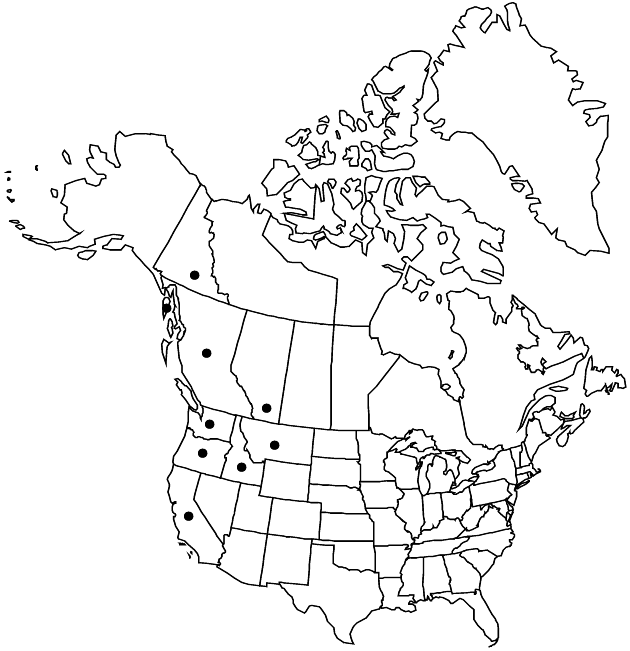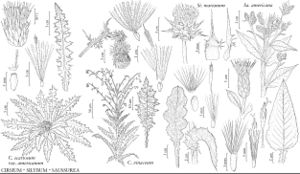Saussurea americana
Bot. Gaz. 6: 283. 1881.
Plants 30–120+ cm; rootstocks short, stout; herbage loosely tomentose when young, glabrescent, sometimes ± glandular. Stems 1–many, leafy, simple or with ascending branches. Leaves cauline, usually more than 20, well distributed, proximal and mid with winged petioles to 6 cm, wings sometimes decurrent 1–2 cm on stems, blades lanceolate to triangular-ovate, 5–15 cm, bases cordate to truncate or tapering, margins sharply dentate, apices acute; mid and distal usually sessile, smaller, narrower, bases tapering. Heads 5–30+ in tight to open corymbiform arrays; (peduncles 0–5 cm). Involucres 10–15 mm. Phyllaries in ca. 5 series, strongly unequal, outer ± ovate, inner lanceolate, abaxial faces pale green, distally dark purplish to nearly black, loosely tomentose. Receptacles naked. Florets 8–21; corollas usually pale lavender-blue to dark purple (rarely white), 11–13 mm; tubes 5–6.5 mm, throats 1.5–2 mm, lobes 3.5–4 mm. Cypselae 4–6 mm; pappus bristles brownish, outer 3–7 mm, inner 9–10 mm.
Phenology: Flowering Jul–Aug.
Habitat: Moist canyons, meadows, streamsides in montane forests
Elevation: 1000–2600 m
Distribution

Alta., B.C., Yukon, Alaska, Calif., Idaho, Mont., Oreg., Wash.
Discussion
Saussurea americana is closely related to an Asian species, S. foliosa Ledebour.
Selected References
None.
